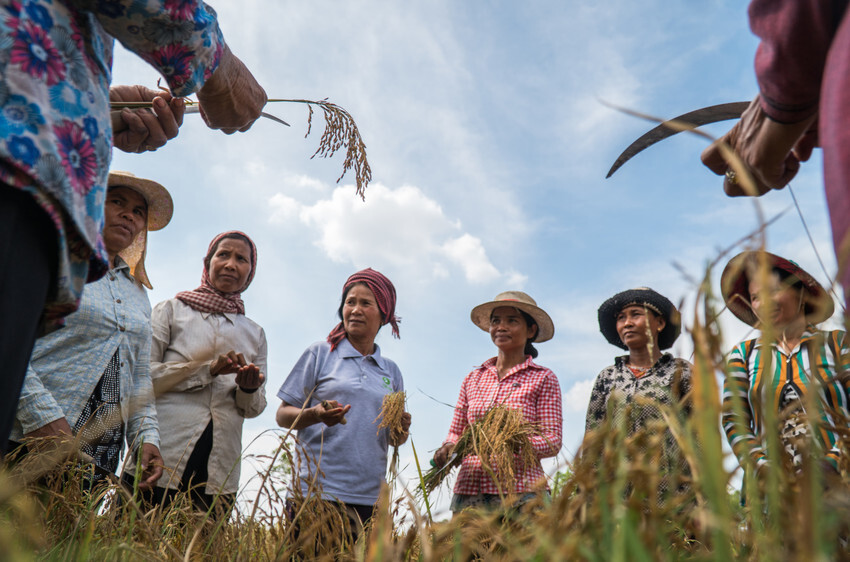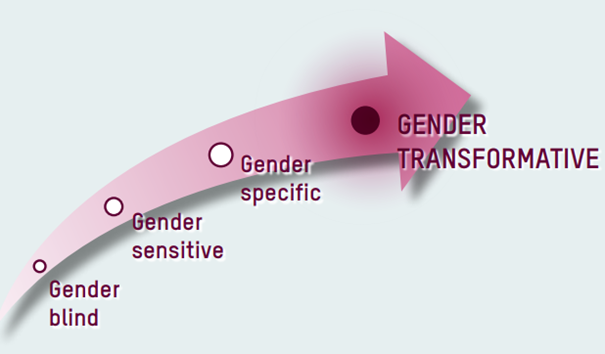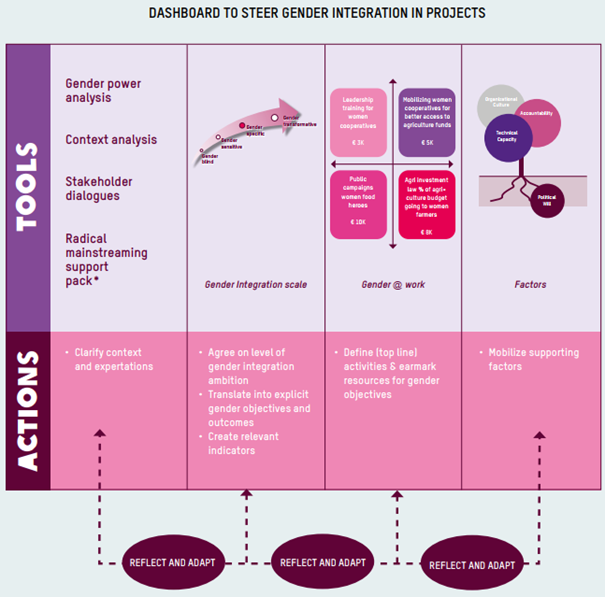Making Gender Visible: three lessons from the Right to Food programme
Transforming women’s position is crucial to ensure the right to food for everyone. Women farmers play a central role in overcoming poverty and food insecurity. However, they gain less from their agricultural labour than men. In addition, they often face more barriers to secure their land rights and to access markets and finances than men. Equalizing the gap could boost agricultural output and decrease global undernourishment by up to 17 percent.

Women farmers in cambodia forming a circle
The Right to Food programme - part of the Strategic Partnership between Oxfam Novib, SOMO and the Dutch Ministry of Foreign Affairs - wanted to transform women’s position by paying attention to gender in all of its work. The report Gender Visible investigated how gender has been integrated in the programme and presents examples of gender integration, that might inspire other programmes. Secondly, the study analysed what helped or hindered gender integration. Based on these findings, three key lessons learned are presented.
Start great by making a conscious choice upfront on how to integrate gender
Gender integration in our projects is pivotal if we want to transform women's position in agriculture and beyond. The Gender Integration Scale identifies four levels of gender integration (see figure below). In which level of integration the project falls, depends on the specificity of the context of that project.

In this study we found that sometimes teams don’t make a deliberate choice for the level of gender integration in their project and therefore miss out on opportunities to improve the position of women. A conscious choice regarding the level of gender integration upfront and the documentation of the reasons for the choice help to stay focused on our gender transformational ambitions, while remaining attuned to context realities. This contextualisation can lead to different projects, which are part of the same programme, integrating gender at different levels. For example, in a more patriarchal context, the project team might decide that a gender specific approach might be mos productive, whereas another project team, in a more open environment, will decide to push for gender transformation. Whatever the choice, key is that this is a conscious choice that is made upfront.
Invest in capacities to increase political will for gender integration
The study looked at four factors that help or hinder gender integration: political will, technical capacity, accountability and organisational culture. The presence and absence of these factors reinforce each other. Limited technical capacity makes it hard for project staff to design a project in which gender is solidly integrated and to be accountable on gender integration. Capacity among management is as important as capacity at project implementation level: a limited capacity negatively affects political will to prioritize and invest in gender integration. It also limits the request for accountability on gender integration. Deliberate investment in technical capacity for gender integration and for achieving a sound understanding of gender at senior and mid management level helps to integrate gender in all aspects of a project.
Requesting gender integration & offer support to make it happen
Explicitly requesting gender integration can be a powerful incentive for project stakeholders to include it in the first place, but it needs a prolonged coaching to make a difference. The study showed that having an explicit gender objective, gender specific indicators in the project help to keep gender on the radar. Also, a donor requesting gender integration is an important incentive for gender integration during the design of a project. However, these accountability measures are more effective if they are complemented with support and coaching. This ensures that gender does not become a tick box exercise, but is meaningfully integrated in all aspects of the project.
Where can I start?
Oxfam has developed a lot of resources that help you integrate gender in the work you are doing. Where to start? The dashboard presented below can help you define what to do first and guide you to key resources on gender integration. For more information and access to the Radical Mainstreaming pack, that includes resources on gender integration, kindly get in touch with Carme Reinoso: carmen@reinoso@oxfamnovib.nl





